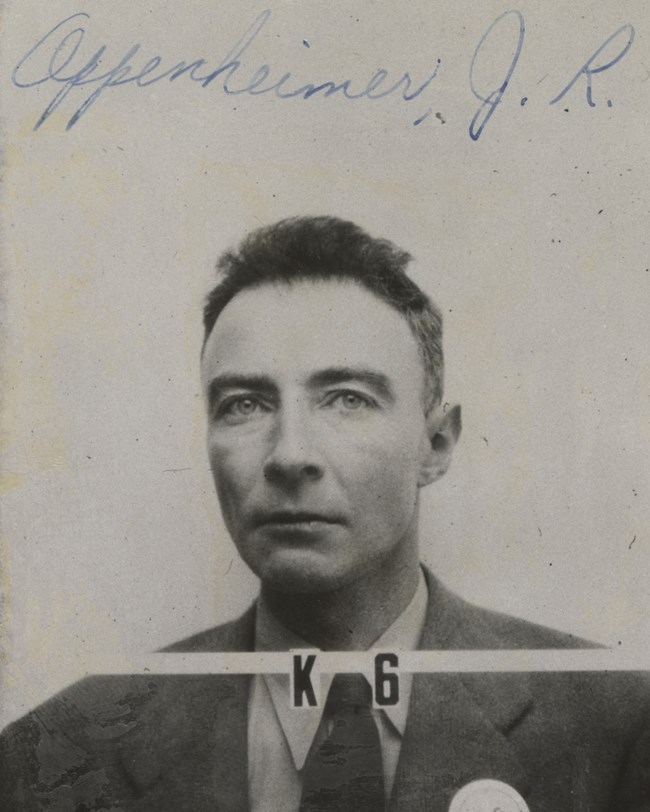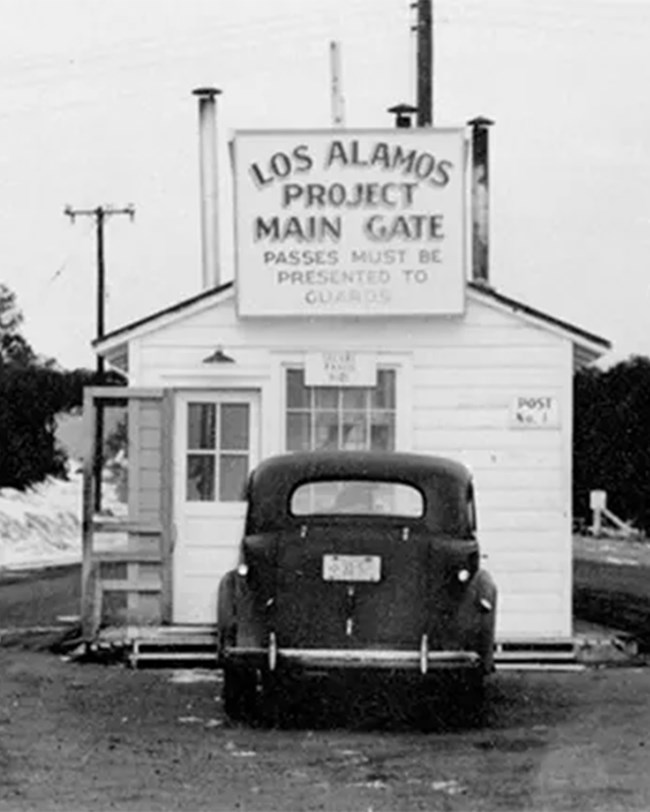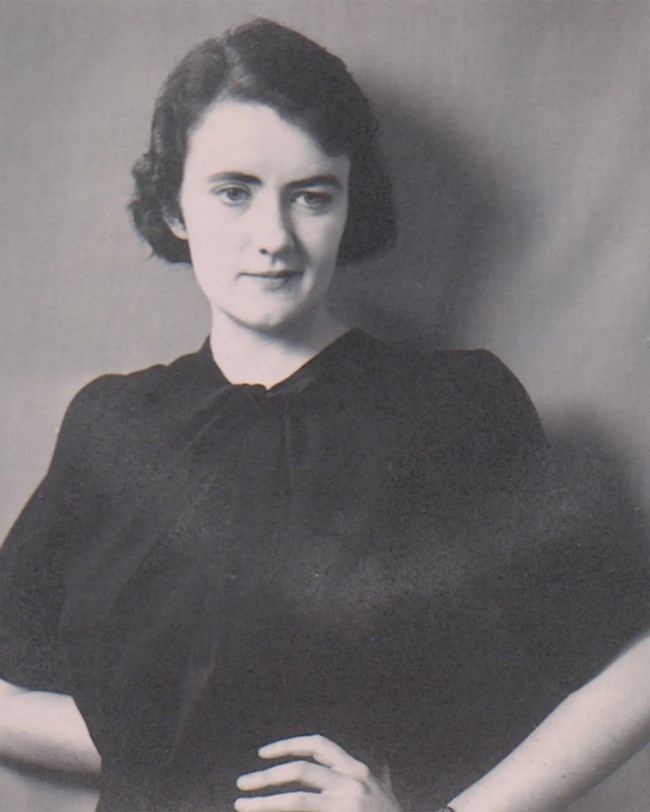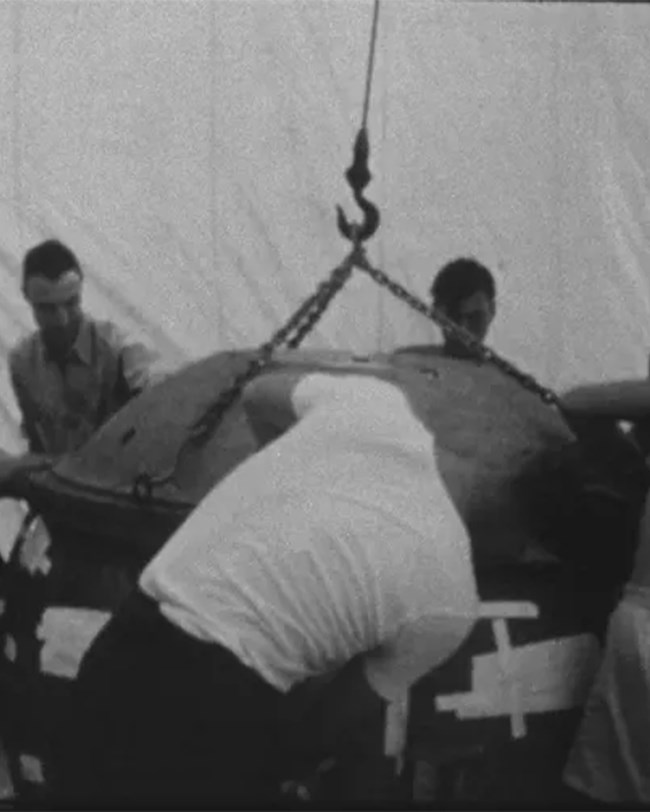Part of a series of articles titled The Life of J. Robert Oppenheimer.
Article
The Life of J. Robert Oppenheimer: The Manhattan Project Years (1941 to 1946)

LOS ALAMOS NATIONAL LABORATORY
Robert Oppenheimer began collaborating with Ernest Lawrence in early 1941 on questions of atomic bomb development. Lawrence used his Cyclotron particle accelerator to develop a method of uranium isotope separation for bomb making, and brought Oppenheimer into a secret meeting about the atomic bomb in October 1941.
In the spring of 1941, the Roosevelt Administration received a British report on atomic bombs, prompting them to create the S-1 Committee of military and academic personnel to focus on an atomic bomb building project. Robert Oppenheimer was made S-1’s “Coordinator of Rapid Rupture” to direct fast-neutron research. Oppenheimer organized a secret seminar of theoretical physicists to make the basic outline for atomic bomb design. Participant Hans Bethe said, “I could see the tremendous intellectual power of Oppenheimer who was the unquestioned leader of the group.”
By the fall of 1942, S-1 Committee members Vanevar Bush and James Conant wanted Oppenheimer to direct an atomic bomb laboratory. Bush and Conant pressured the War Department to approve security clearances for Oppenheimer and other scientists with left wing political views. On September 18, 1942, General Leslie Groves took charge of S-1’s work and the Manhattan Engineer District, later known as the Manhattan Project, was established. With Groves’ support, Oppenheimer was appointed as the Director of the Los Alamos Laboratory at a secret atomic bomb-making laboratory.
In the winter of 1942-43, Oppenheimer’s close friend, Professor Hakkon Chevalier told Oppenheimer that a physicist at Shell, George Eltenton, wanted Oppenheimer to pass atomic bomb information to the Soviet consulate in San Francisco. Chevalier later maintained that he was just informing Oppenheimer and not soliciting. While Oppenheimer never considered treason, this “Chevalier Incident” caused Oppenheimer problems as he sought security clearances for Manhattan Project work and in his post-war life.

US DEPARTMENT OF ENERGY
Oppenheimer, Groves, and Berkley physicist Edwin McMillian inspected Jemez Springs, New Mexico, as a potential site for the laboratory but rejected the location in a deep canyon. Groves asked Oppenheimer if there was somewhere else in the area appropriate for the secret laboratory. Oppenheimer suggested the Los Alamos Ranch School. After driving through the Jemez Mountains to the school, Groves inspected it and said, “This is the place.” The army began purchasing the land two days later.
Construction crews built temporary barracks and crude laboratory buildings all painted army green. Oppenheimer later said, “I’m responsible for ruining a beautiful place.” Oppenheimer had never managed anything larger than a graduate seminar but molded himself into an efficient and persuasive administrator. After scientists opposed enlisting in the army, Oppenheimer negotiated with Groves to have Los Alamos staff remain civilians.
Oppenheimer wore jeans or khaki pants and a blue work shirt to work in Los Alamos and the civilian workforce followed his casual lead. The lab was open day and night with scientists setting their own schedules. Oppenheimer “completely changed to fit his new role” colleague Hans Bethe said, “he brought out the best in us.”
Balancing the contrasting needs of secrecy and scientific collaboration while trying to maintain harmony between civilian and military workers fell to Oppenheimer. Young scientists complained that army management was slowing progress while Oppenheimer worked to protect his staff from security. Groves referred to Los Alamos civilians as “the children” to his army staff and told one commander to “try to satisfy these temperamental people.” Oppenheimer found army counterintelligence officers difficult to work with, and he was subjected to much surveillance. Oppenheimer’s office was wiretapped while his bodyguard and driver, Andrew Walker, was secretly a counterintelligence officer placed to monitor Oppenheimer. Huge responsibilities, constant surveillance, and a fear of failure took a toll on Oppenheimer. In the summer of 1943, Oppenheimer told his friend Robert Bacher that he was thinking of quitting.

LIBRARY OF CONGRESS
In June of 1943, Oppenheimer was observed by military intelligence visiting Jean Tatlock in San Francisco. Tatlock, a Communist Party member, had a relationship with Oppenheimer and was suspected of sharing atomic secrets and was under FBI surveillance. Groves’ security aide Lieutenant Colonel Lansdale wanted to press Oppenheimer to inform on Communists while intelligence officer Colonel Boris Pash wanted Oppenheimer fired. Both Pash and Landsdale interviewed Oppenheimer while secretly recording him. Groves believed Oppenheimer’s ambition guaranteed his loyalty.
Oppenheimer chain smoked four to five packs of cigarettes a day along with a pipe and had a persistent cough. At five feet, ten inches (1.5 m) tall, he only weighed 115 pounds (52 kg) during his time directing Project Y. Many workers, including Oppenheimer, drank as “alcohol flowed freely on the mesa.” Louis Hempelmann, director of the Health Group, said, “as things wore on and everybody got tired and tense and irritable, it wasn’t so good.” Oppenheimer relieved stress by riding his horse on mountain trails.

US DEPARTMENT OF ENERGY
Oppenheimer, physicist Kenneth Bainbridge, and some army officers chose an area 18 by 25 miles (29 by 40 km) in central New Mexico for the first atomic bomb test, code named “Trinity.” As the morning of the test approached, Oppenheimer climbed the tower holding the “Gadget” test device alone for a final inspection of what Project Y had made under his directorship. General Groves then took Oppenheimer to a bunker six miles south of ground zero where they decided on a 5:30 am test of the Gadget.
After the successful detonation of the first atomic test bomb at Trinity, Oppenheimer told his brother Frank simply “it worked.” Twenty years later in 1965, Oppenheimer claimed seeing the successful test detonation reminded him of lines from the Hindu holy book the Bhagavad Gita, “Now I am become Death, destroyer of worlds...” In the weeks following the Trinity test, Oppenheimer became “very still and ruminative” as he consulted with air force officers on potential Japanese targets.
After the Little Boy atomic bomb designed at Los Alamos was dropped on Hiroshima, Oppenheimer talked to assembled workers and said he was “proud” and his only regret was not getting the bomb fast enough to use against the Germans. Charlotte Serber said that after the Fat Man atomic bomb was dropped on Nagasaki, “a sense of gloom settled over the lab.” An FBI informant reported that Oppenheimer was a” nervous wreck” the day Nagasaki was bombed. Oppenheimer took his family to their vacation home in New Mexico, Perro Caliente, and began planning for life after the Manhattan Project.
Oppenheimer became famous because of his role in the Manhattan Project. In a speech before leaving Project Y he warned of the dangers of wars fought with atomic bombs, which he called “a most terrible weapon.” In October 1945, Oppenheimer met with President Truman to advocate for international control of atomic weapons but aggravated Truman. Truman later described Oppenheimer as a “cry-baby scientist.” Riding the crest of his newfound fame, Oppenheimer considered offers to teach at many universities before deciding on Caltech. In November 1945 the Oppenheimer family moved to Pasadena.
- Bird, Kai, and Martin J. Sherwin. American Prometheus: The Triumph and Tragedy of J. Robert Oppenheimer. 1st Vintage Books ed. New York: Vintage Books, 2006.
- Rhodes, Richard. The Making of the Atomic Bomb. 1. Touchstone ed. A Touchstone Book. New York, NY: Simon & Schuster, 1988.
- Goodchild, Peter. J. Robert Oppenheimer: Shatterer of Worlds. 1st American ed. Boston: Houghton Mifflin, 1981.
- McMillan, Priscilla Johnson. The Ruin of J. Robert Oppenheimer: And the Birth of the Modern Arms Race. New York: Viking, 2005.
Last updated: July 21, 2023
